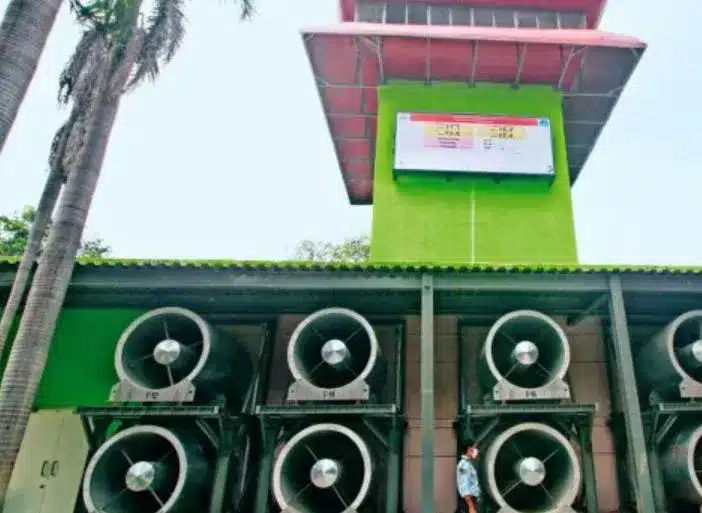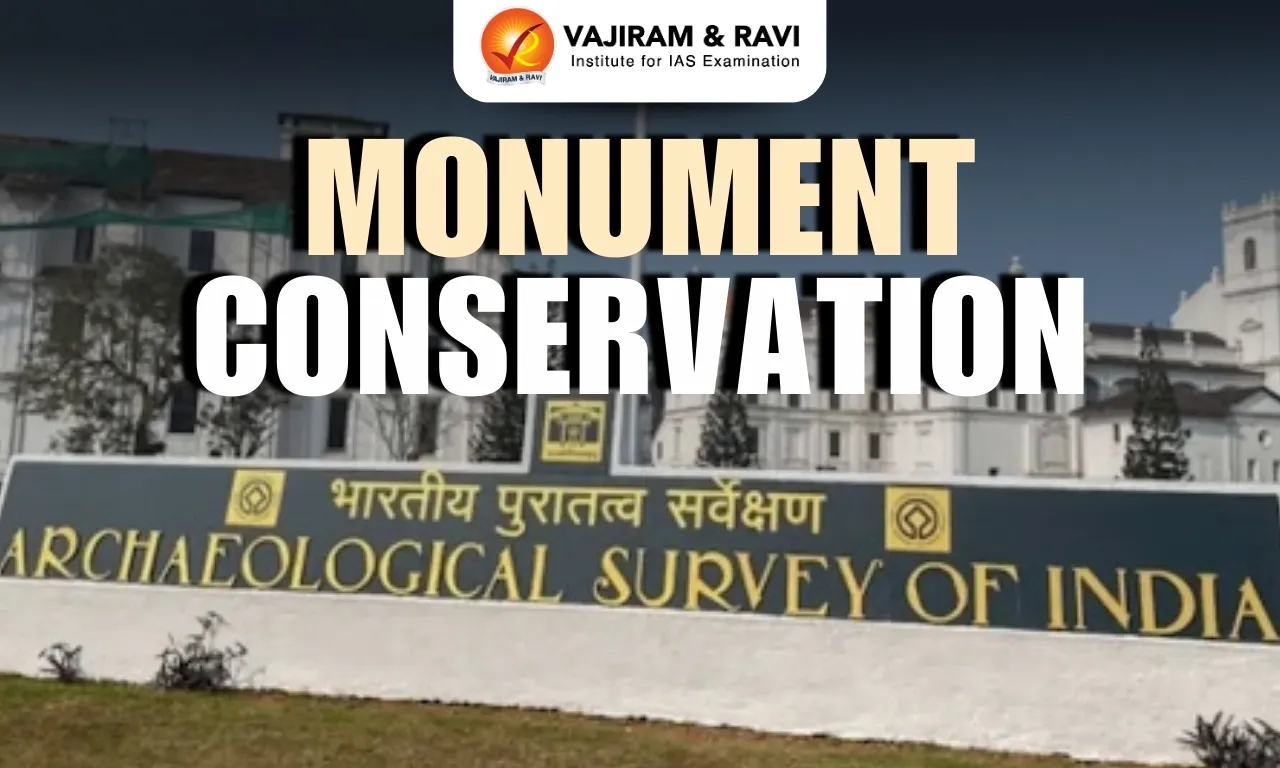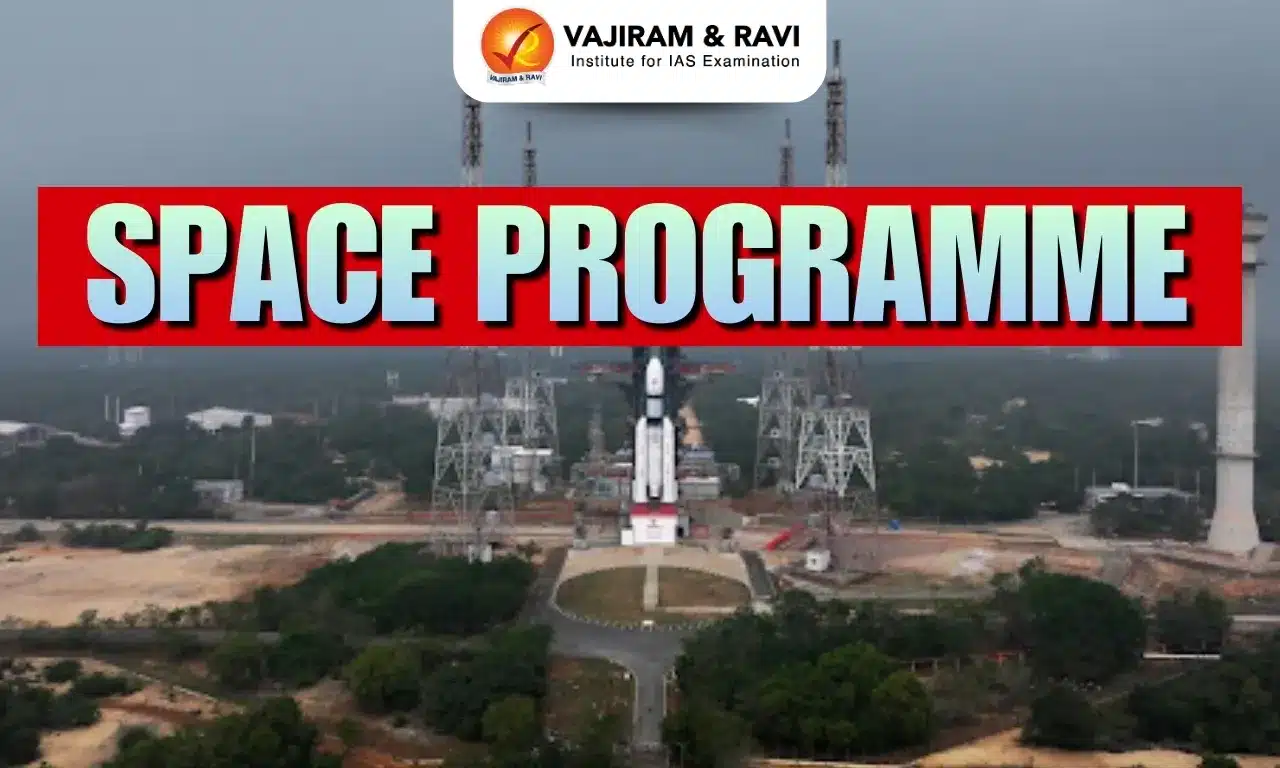What’s in today’s article?
- Why in News?
- What is Air Quality Index (AQI)?
- What is Commission for Air Quality Management (CAQM)?
- Why India’s already dangerous air pollution is set to worsen?
- Flaws in the steps taken to address the air pollution in India
- Way Forward
Why in News?
On September 25, Delhi’s air quality dropped into the ‘poor’ category (AQI 200-300) for the first time since mid-June, marking the start of North India’s bad air season.
In response, the Delhi government launched a 21-point Winter Action Plan to combat pollution, which includes: Drone monitoring of pollution hotspots; Deployment of anti-smog guns; Exploring the possibility of creating artificial rain.
The Commission for Air Quality Management (CAQM), responsible for implementing the Graded Response Action Plan (GRAP) in the NCR, is closely monitoring the situation.
What is Air Quality Index (AQI)?
- AQI was launched in October 2014 to disseminate information on air quality in an easily understandable form for the general public.
- The measurement of air quality is based on eight pollutants, namely, PM10, PM2.5, NO2, SO2, CO, O3, NH3, and Pb
- The AQI transforms complex air quality data of various pollutants into a single number for ease of understanding.
What is Commission for Air Quality Management (CAQM)?
- CAQM is a statutory body formed under the Commission for Air Quality Management in National Capital Region and Adjoining Areas, Act 2021.
- The commission aims at better coordination, research, identification, and resolution of problems related to air quality in NCR and adjoining areas.
Why India’s already dangerous air pollution is set to worsen?

- India’s Air Pollution Crisis Set to Worsen Post-Monsoon
- With the southwest monsoon season ending, India’s air pollution is expected to deteriorate due to stagnant air and temperature inversion, where warm air traps cooler air near the ground, preventing pollutants from dispersing.
- This leads to extremely hazardous levels of PM 2.5 and other pollutants.
- While smog intensifies in winter, poor air quality is a year-round issue that requires sustained and comprehensive action.
- Meteorological conditions, such as temperature inversion and low wind speeds, particularly affect the Indo-Gangetic plain, worsening pollution.
- Inequality and Air Pollution
- Economic inequality exacerbates the crisis, with wealthier citizens able to afford air purifiers or relocate to cleaner areas, while poorer communities face the full impact of toxic air.
- This highlights the issue of equity in access to clean air.
- Various Pollution Sources
- India’s air pollution crisis stems from multiple, overlapping sources.
- Year-round contributors such as biomass burning for cooking, trash-burning, vehicular emissions, and industrial activity combine with episodic events such as farm stubble burning and festival firecrackers.
Flaws in the steps taken to address the air pollution in India
- Current strategies
- India has adopted several superficial measures to combat air pollution, such as smog towers, water guns, and odd-even road sharing.
- The latest “silver bullet” is cloud seeding, a technique that disperses chemicals to induce rainfall, temporarily clearing the air.
- These strategies prioritize appearance over addressing the root causes of pollution.
- Cloud Seeding: Limited Impact and Ethical Concerns
- Cloud seeding offers only a short-term reprieve, diverting attention from needed systemic changes.
- Its environmental and ethical issues include:
- Redistributing rainfall, potentially depriving other regions and worsening water scarcity.
- Chemicals like silver iodide may pose long-term risks to agriculture and ecosystems.
- In a country like India, where water resources are already strained, cloud seeding risks aggravating regional disparities.
- Flaws of Smog Towers
- Smog towers, intended to clean surrounding air, are another flawed solution. Their impact is limited to the immediate area, leaving broader pollution issues unaddressed.
- Furthermore, the energy consumption needed to operate these towers may contribute to additional emissions, potentially making them counterproductive.
Way Forward
- India’s focus on cloud seeding and smog towers detracts from addressing air pollution at its source.
- Instead, science-based solutions and a coordinated, multi-sectoral approach are required.
- Coordination Among Agencies
- Tackling air pollution demands collaboration across government bodies overseeing transport, industry, agriculture, and urban planning.
- For example, addressing crop stubble burning needs cooperation among farmers, policymakers, and regulators. A unified, year-round, nationwide strategy is essential.
- Capacity Building and Critical Thinking
- Building capacity among stakeholders, from researchers to policymakers, and fostering critical thinking are crucial for data-driven solutions.
- Institutional frameworks must be strengthened, with investments in research and air quality monitoring systems across India, including satellite-based and low-cost sensor networks.
- Beyond Tech-Centric Solutions
- While technological fixes can help, they often serve vested interests, benefiting wealthier citizens with air purifiers, while leaving poorer communities vulnerable.
- The real fight for clean air is political, and quick fixes perpetuate inequalities rather than addressing root causes.
- Long-Term Commitment
- India needs a multi-decadal, multi-sectoral effort grounded in scientific thinking and committed to sustained collaboration to tackle the structural issues behind its air pollution crisis.
Q.1. Why are solutions like smog towers and cloud seeding inadequate in tackling air pollution?
Smog towers and cloud seeding offer only temporary relief, addressing symptoms rather than the root causes of air pollution. These solutions are limited in scale, and their environmental and ethical implications, such as energy consumption and potential regional droughts, make them ineffective long-term options.
Q.2. What are the necessary steps to effectively address India’s air pollution crisis?
Effective measures require multi-sectoral collaboration among government agencies, capacity building for stakeholders, and investment in air quality monitoring. Solutions should be data-driven and address pollution sources year-round, beyond short-term, superficial actions
Source: Expert Explains: Why quick fixes like smog towers, cloud seeding won’t save us from air pollutio | CAQM | Hindustan Times
Last updated on January, 2026
→ Check out the latest UPSC Syllabus 2026 here.
→ Join Vajiram & Ravi’s Interview Guidance Programme for expert help to crack your final UPSC stage.
→ UPSC Mains Result 2025 is now out.
→ UPSC Notification 2026 is scheduled to be released on January 14, 2026.
→ UPSC Calendar 2026 has been released.
→ UPSC Prelims 2026 will be conducted on 24th May, 2026 & UPSC Mains 2026 will be conducted on 21st August 2026.
→ The UPSC Selection Process is of 3 stages-Prelims, Mains and Interview.
→ Prepare effectively with Vajiram & Ravi’s UPSC Prelims Test Series 2026 featuring full-length mock tests, detailed solutions, and performance analysis.
→ Enroll in Vajiram & Ravi’s UPSC Mains Test Series 2026 for structured answer writing practice, expert evaluation, and exam-oriented feedback.
→ Join Vajiram & Ravi’s Best UPSC Mentorship Program for personalized guidance, strategy planning, and one-to-one support from experienced mentors.
→ UPSC Result 2024 is released with latest UPSC Marksheet 2024. Check Now!
→ UPSC Toppers List 2024 is released now. Shakti Dubey is UPSC AIR 1 2024 Topper.
→ Also check Best UPSC Coaching in India

















